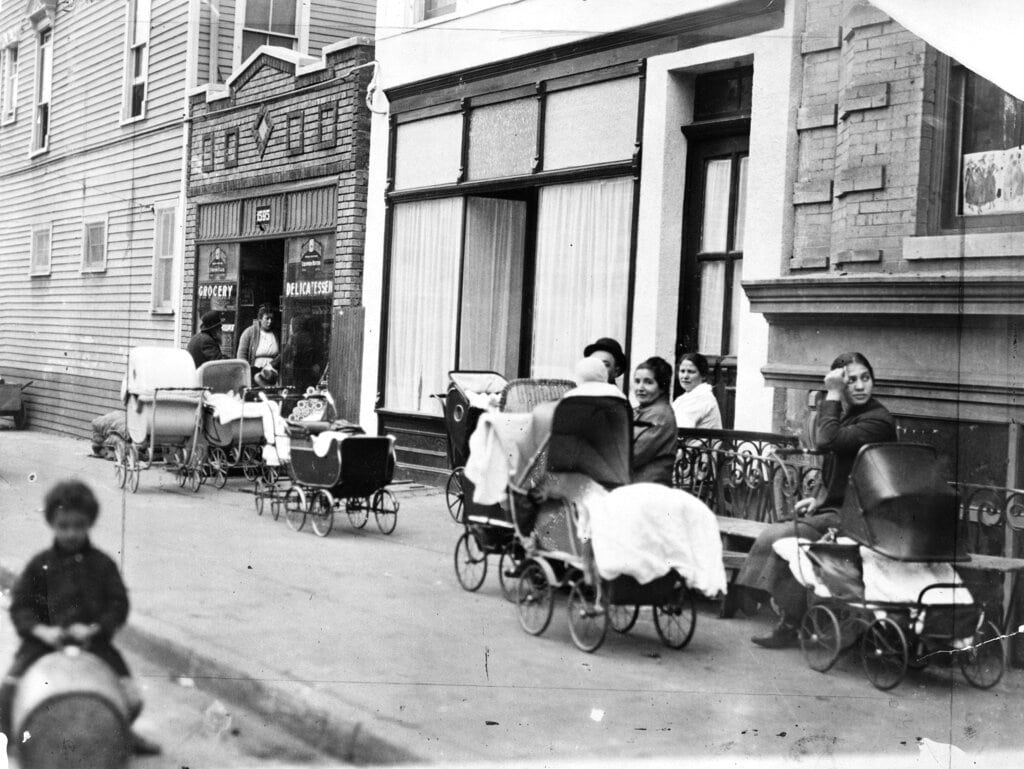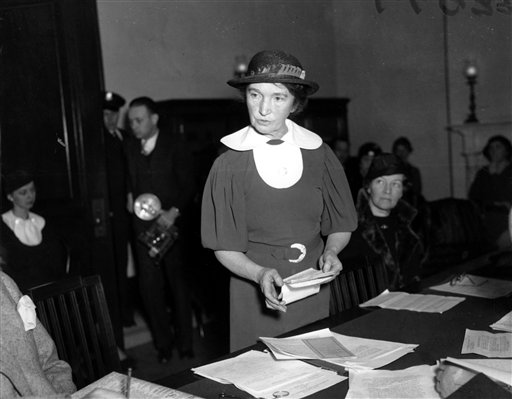Margaret Sanger, mother of the birth control movement, was also a free speech activist prosecuted for publishing articles on birth control. She and her husband, Bill Sanger, moved from Westchester, New York, to Upper Manhattan with their two children in December 1910 so he could pursue a career as an artist. They joined their Socialist local at a time when the party had about 118,000 members and became active in the movement.
Sanger worked as a nurse among low-income, immigrant Lower East Side women. After a patient died due to a botched abortion, Sanger decided to dedicate her life to birth control. In 1912 she started a column in the Socialist daily newspaper The Call, “What Every Girl Should Know.” She wrote about anatomy, reproduction, abortion, menstruation and masturbation, and advocated contraception access, although she was not specific about what kind.
Post office bans Sanger's column on sexually transmitted infections
Her February 8, 1913, column was on the risks of syphilis and gonorrhea to women. After the newspaper was sent out, U.S. Post Office inspector Anthony Comstock learned of the column. Forty years earlier, Congress had passed the Comstock Act, which stiffened obscenity penalties and made it illegal to send birth control information through the U.S. mail.
The New York Post Office confiscated all copies of the February 8 issue of The Call.
In the next week’s Call, in Sanger’s column space, the editors printed “What Every Girl Should Know—NOTHING! By order of the Post Office Department.” Two weeks later, the ban was lifted, and the full article appeared. During World War I, the article was printed by the government and distributed to U.S. troops – without credit to Sanger.
Sanger begins 'The Woman Rebel' to challenge Comstock law
In the fall of 1913 on a trip to Europe, Sanger researched birth control, finding that it was widely accepted. She came up with the idea of a magazine, The Woman Rebel, to challenge the Comstock law. A piece she wrote in the first issue argued that contraception would reduce poverty and increase wages.
The Post Office seized the magazine’s entire stock. Ultimately, six of the seven issues of The Woman Rebel were confiscated. The Post Office found several articles in the July issue obscene, including articles written by her proposing a Birth Control League of America and explaining the safety of birth control, and another, not written by Sanger, entitled “A Defense of Assassination,” in response to Archduke Franz Ferdinand’s assassination. The Comstock law had also criminalized using the mail to incite murder and assassination. In August 1914, Sanger was arrested and charged with four criminal counts related to the July issue of the magazine carrying a maximum sentence of 45 years.
Government drops criminal charges over Sanger's magazine
While Sanger was awaiting her trial date, she wrote a pamphlet, Family Limitation, that explained withdrawal, condoms, douches, suppositories, and pessaries (cervical plugs, popular in Europe). She included anatomy diagrams and used the terms penis, vagina, uterus, and semen.
When her trial date was set, she fled to Europe under a false passport, certain she would be found guilty. While she was gone a Comstock assistant decoyed Bill Sanger into giving him a copy of Family Limitation. Bill Sanger was arrested and served 30 days in the city prison.
Comstock died days after the end of Bill Sanger’s trial, which resulted in the judge finding him guilty and Bill Sanger serving 30 days in jail. Margaret Sanger decided to return to the United States to stand trial. She would plead not guilty. But the government dropped charges against her.
Sanger arrested after opening birth control clinic
Sanger then launched a national speaking tour. Covered positively by the press, she spoke about free speech and sexual liberation, delivering the same speech 199 times.
With the idea to open a clinic to provide birth control and information to low-income women, she rented a storefront in the Jewish and Italian slum of Brownsville, Brooklyn, and distributed fliers in English, Yiddish and Italian to local mothers.
The clinic often had lines of waiting mothers with their baby carriages stretched down the block. Within the clinic, Sanger may have fitted women for pessaries, though she claimed she did not. Ten days later, she was arrested for distributing birth control and the clinic was shuttered.
Brownsville mothers attended her trial, coming with bread, fruit, pacifiers and diapers for their babies. Sanger was found guilty and sent to the workhouse at Blackwell’s Island. In 1916 and 1917, at least 19 activists in addition to Sanger and fellow birth control activist Emma Goldman, were arrested and imprisoned for talking about birth control and distributing information.

In this Oct. 27, 1916 photo made available by the Library of Congress, people with baby carriages sit in front of the Sanger Clinic in the Brownsville area of the Brooklyn borough of New York. Margaret Sanger, her sister, Ethyl Byrne, and colleague, Fania Mindell, opened the America's first birth control clinic on Oct. 16, 1916. The three sought to provide birth control advice to low-income immigrant women. (Social Press Association, Library of Congress via AP)
Sanger convicted, but judge says doctors can prescribe birth control
In the ultimate decision in Sanger’s clinic case, the judge upheld her conviction. However, he broadened the definition of the “physicians’ exception” in the New York birth control law. This was a portion of the law allowing doctors to share information and prescriptions with married people that could prevent “disease.”
Sanger’s judge said disease was “an alteration in the state of the body” that could cause pain and sickness. In other words, it could mean pregnancy. By interpreting the state Comstock law to allow doctors to prescribe or talk about birth control, he took a step toward dismantling it.
In 1923 Sanger opened the Birth Control Clinical Research Bureau, which became the model for clinics around the country. Her two greatest legacies are helping form the Planned Parenthood Federation of America and winning FDA approval of the birth control pill.
Amy Sohn is the award-winning author of The Man Who Hated Women: Sex, Censorship, & Civil Liberties in the Gilded Age.

